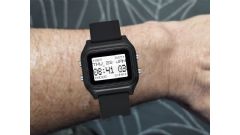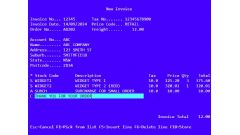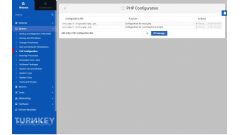Developing lightweight markup using ASP.NET (or WebForms without forms)
by johna | June 9, 2012 | ASP.NET Web Forms ASP.NET Html Forms Web Development
There are times when I really like ASP.NET and times when I don't. Usually the times that I don't are when I don't have as much control over the final HTML markup as I would like, or when I look at the amount of JavaScript, ViewState and other markup that ASP.NET has added.
Sometimes I miss the simplicity and control of Classic ASP. Wouldn't it be nice to have full control over the final markup and create lightweight code perhaps combined with jQuery? Lately I have been looking at alternatives to ASP.NET Web Forms to use instead.
ASP.NET MVC looks like an option but still has a lot of controls that generate HTML for you (although I'm sure they are optional). I have tried a little in MVC but I haven't quite got my head around it yet.
ASP.NET Web Pages (Razor) looks real interesting. You can code "top to bottom" like Classic ASP, and still access external classes. Like Classic ASP though your code is largely exposed in CSHTML files.
PHP also has a lot of the features of Classic ASP, and also many features of ASP.NET but although I have coded a little in PHP I miss the Visual Studio development environment and many features of ASP.NET.
Lately I have been wondering about the possibility of using ASP.NET Web Forms but without the form runat="server" tag. Without this tag, ASP.NET does not seem to add anything to the page at all. From some basic tests it seems that it runs well and you still have the ability to use code-behind pages, and many ASP.NET controls such as repeaters.
A post at Enterprise Software Development (link broken, use this instead) lists the controls that do and don't require a server-side form tag.
From that list you will see that all of the form elements like TextBoxes, DropDownLists, RadioButtons, etc cannot be used without a server-side form tag. Instead you use normal HTML form controls. But how do you access these HTML controls from the code behind?
Retrieving values on post back is easy, you just use Request.QueryString or Request.Form.
But passing data to the control could be a little messy. Do you use a ASP.NET Literal control in the value field or do you use <%= value %> in the markup page? I found it best to add runat="server" to my HTML controls and then you can access the control in your code-behind like this: ((HtmlInputText)txtName).Value = "blah";
There is a problem with adding runat="server" however. ASP.NET then replaces the name attribute of the control, even if you have the ClientIDMode set to static. I can't see a way around this.
Here's a example that shows what you can do with a textbox and drop down list:
Default.aspx
Default.aspx.cs
As you can see, you have similar functionality to ASP.NET server controls but more control over the final markup, and less overhead like ViewState and all the JavaScript ASP.NET adds.
We've had WebForms, WinForms, MVC and WebPages. I'm going to call this ASP.NET HtmlForms.
Useful links:
Sometimes I miss the simplicity and control of Classic ASP. Wouldn't it be nice to have full control over the final markup and create lightweight code perhaps combined with jQuery? Lately I have been looking at alternatives to ASP.NET Web Forms to use instead.
ASP.NET MVC looks like an option but still has a lot of controls that generate HTML for you (although I'm sure they are optional). I have tried a little in MVC but I haven't quite got my head around it yet.
ASP.NET Web Pages (Razor) looks real interesting. You can code "top to bottom" like Classic ASP, and still access external classes. Like Classic ASP though your code is largely exposed in CSHTML files.
PHP also has a lot of the features of Classic ASP, and also many features of ASP.NET but although I have coded a little in PHP I miss the Visual Studio development environment and many features of ASP.NET.
Lately I have been wondering about the possibility of using ASP.NET Web Forms but without the form runat="server" tag. Without this tag, ASP.NET does not seem to add anything to the page at all. From some basic tests it seems that it runs well and you still have the ability to use code-behind pages, and many ASP.NET controls such as repeaters.
A post at Enterprise Software Development (link broken, use this instead) lists the controls that do and don't require a server-side form tag.
From that list you will see that all of the form elements like TextBoxes, DropDownLists, RadioButtons, etc cannot be used without a server-side form tag. Instead you use normal HTML form controls. But how do you access these HTML controls from the code behind?
Retrieving values on post back is easy, you just use Request.QueryString or Request.Form.
But passing data to the control could be a little messy. Do you use a ASP.NET Literal control in the value field or do you use <%= value %> in the markup page? I found it best to add runat="server" to my HTML controls and then you can access the control in your code-behind like this: ((HtmlInputText)txtName).Value = "blah";
There is a problem with adding runat="server" however. ASP.NET then replaces the name attribute of the control, even if you have the ClientIDMode set to static. I can't see a way around this.
Here's a example that shows what you can do with a textbox and drop down list:
Default.aspx
<%@ Page Language="C#" AutoEventWireup="true" CodeBehind="Default.aspx.cs" Inherits="NoForm.Default" %>
<!DOCTYPE html PUBLIC "-//W3C//DTD XHTML 1.0 Transitional//EN"
"http://www.w3.org/TR/xhtml1/DTD/xhtml1-transitional.dtd">
<html xmlns="http://www.w3.org/1999/xhtml">
<head runat="server">
<title></title>
</head>
<body>
<form action="" method="post">
<label for="txtName">Name:</label>
<input id="txtName" name="txtName" runat="server" /><br />
<label for="ddlState">State:</label>
<select id="ddlState" name="ddlState" runat="server">
<option value=""></option>
</select><br />
<input type="submit" value="Submit" />
</form>
</body>
</html>
Default.aspx.cs
using System;
using System.Web.UI.HtmlControls;
using System.Web.UI.WebControls;
namespace NoForm
{
public partial class Default : System.Web.UI.Page
{
protected void Page_Load(object sender, EventArgs e)
{
//Default values
string name = string.Empty;
string state = string.Empty;
if (Request.RequestType == "POST")
{
//If form submitted (post back)
name = Request.Form["txtName"];
state = Request.Form["ddlState"];
//Server side form validation would go here
//and actions to process form and redirect
}
((HtmlInputText)txtName).Value = name;
((HtmlSelect)ddlState).Items.Add(new ListItem("ACT"));
((HtmlSelect)ddlState).Items.Add(new ListItem("NSW"));
((HtmlSelect)ddlState).Items.Add(new ListItem("NT"));
((HtmlSelect)ddlState).Items.Add(new ListItem("QLD"));
((HtmlSelect)ddlState).Items.Add(new ListItem("SA"));
((HtmlSelect)ddlState).Items.Add(new ListItem("TAS"));
((HtmlSelect)ddlState).Items.Add(new ListItem("VIC"));
((HtmlSelect)ddlState).Items.Add(new ListItem("WA"));
if (((HtmlSelect)ddlState).Items.FindByValue(state) != null)
((HtmlSelect)ddlState).Value = state;
}
}
}
As you can see, you have similar functionality to ASP.NET server controls but more control over the final markup, and less overhead like ViewState and all the JavaScript ASP.NET adds.
We've had WebForms, WinForms, MVC and WebPages. I'm going to call this ASP.NET HtmlForms.
Useful links:
- System.Web.UI.HtmlControls Namespace - Microsoft
- What Server Side controls require a Server Form - Enterprise Software Development (link broken, use this instead)
Related Posts
Another pointless project - the programmable digital watch
by johna | January 20, 2025
I've come up with yet another pointless project. Would you like a watch that you could program yourself - but not a "smart watch"?
Converting dBase IV programs to run in the browser
by johna | September 13, 2024
Some pointless entertainment trying to get some old dBase programs running in the browser.
How to set up a debugging using the Turnkey Linux LAMP stack and VS Code
by johna | December 19, 2023
The second part in my guide to setting up a website and database using the Turnkey Linux LAMP stack.




Comments
There are no comments yet. Be the first to leave a comment!